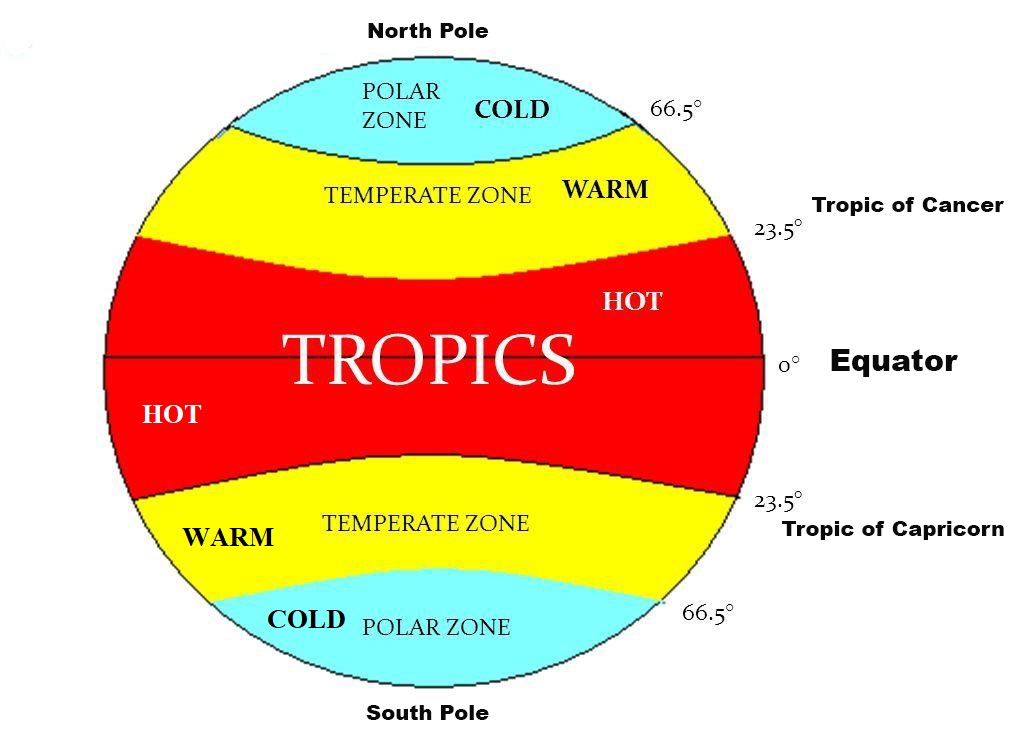Heat Zones of the Earth
Important for Class 5
The parallels of latitude divide the earth into different heat zones. There are three types of heat zones –
- Torrid zone,
- Temperate zone and
- Frigid zone

The Torrid Zone
Places on the equator or those very close to it get direct rays of the sun for all or most of the year. The torrid zone refers to the area of the earth near the equator which is generally hot and humid. Thus these areas are called torrid zone. These places also get heavy rain all the year round. The torrid zone lies between the Tropic of Cancer and the Tropic of Capricorn due to which it is also called tropical zone.
The Temperate Zone
The temperate zone are not very hot because sun rays falling in these zones are slanted and cause less heat than in the torrid zone. There are two temperate zone. The north temperate zone lies between the Tropic of Cancer and the Arctic Circle. The south temperate zone lies between the Tropic of Capricorn and the Antarctic Circle. In the temperate zones the four seasons spring, summer, autumn and winter are clearly felt.
The Frigid Zone
The frigid zone are very cold because rays of the sun fall at a great slant. So, these zones get very little heat and are always cold covered by snow. The summers are cool and the winters are freezing cold. There are two frigid zones. The north frigid zones lies between the Arctic Circle and the North Pole. The south frigid zones lies between the Antarctic Circle and the South Pole.
A. ANSWER THESE QUESTIONS.
- What kind of climate do the temperate zones have?
- How many heat zones does the earth have?
- Give one reason why rays that fall at a slant give less heat?
- Why is the torrid zone much hotter than the frigid zones?
- Write difference between the temperate and frigid zone.
B. TRUE OR FALSE.
- Only the torrid zone gets direct rays from the sun.
- Seasonal changes are felt most in the temperate zones.
- The temperate zones are neither very hot nor very cold.
- The meridians of longitude divide the earth into heat zones.
- The south temperate zone lies to the south of the Antarctic Circle.
- Seasonal changes are felt least in the torrid zones.
C. FILL IN THE BLANKS.
- The ________ zone lies just north of the Arctic Circle.
- The ________ zone lies just south of the Antarctic Circle.
- Places north of the tropic of ________ never get direct rays from the sun.
- The ________ zone is the hottest zone.
- The northern part of India lies in the ______ zone.
Must Read: Food and Health Class 5
Some more important topics of CLASS 5
Image Credits: http://www.amit-sengupta.com.






